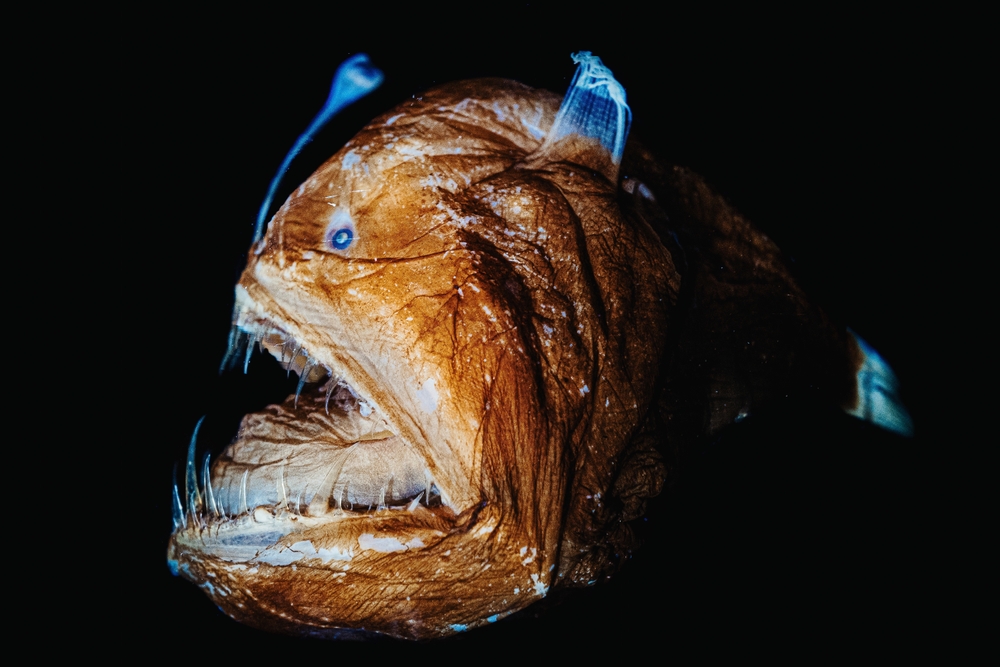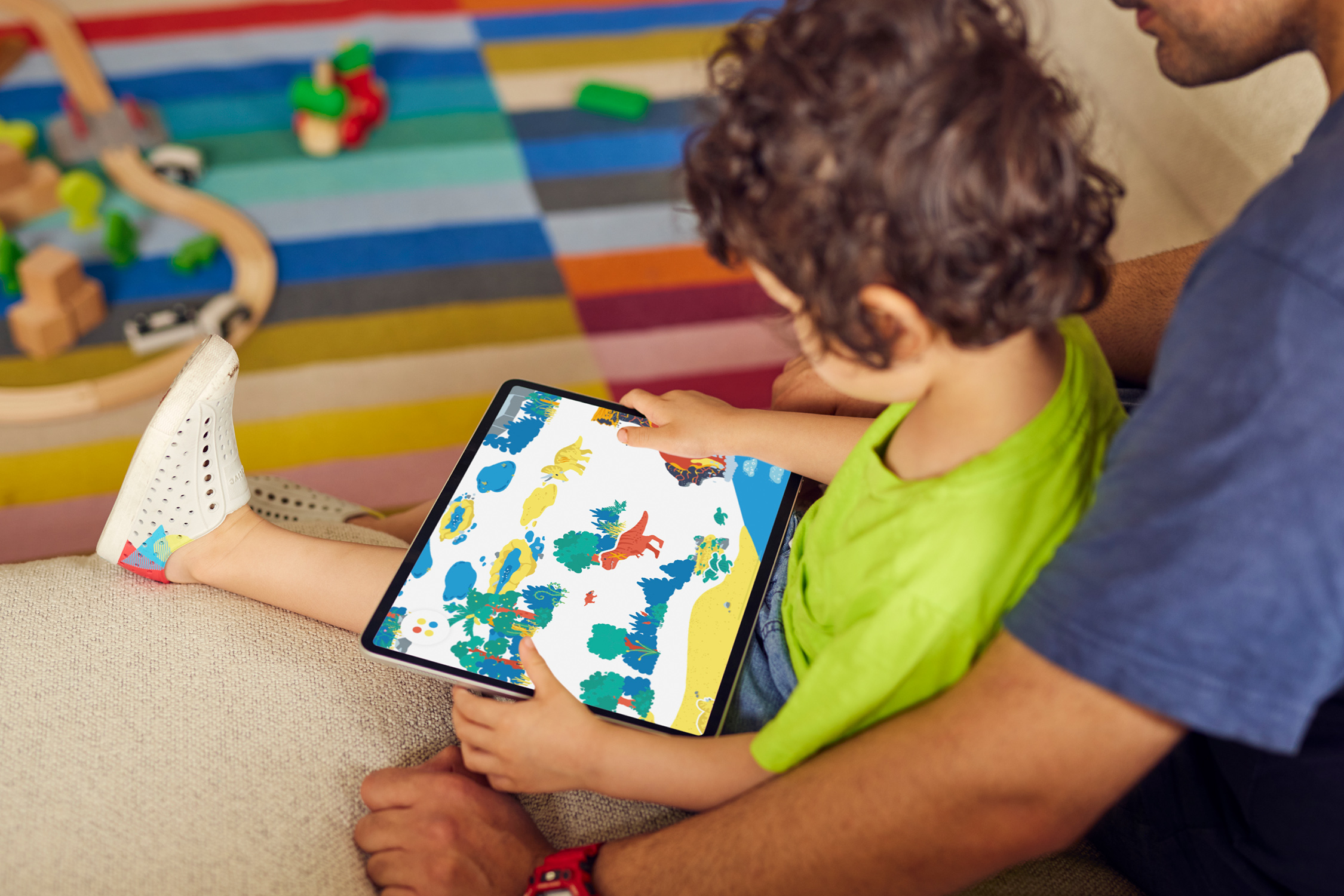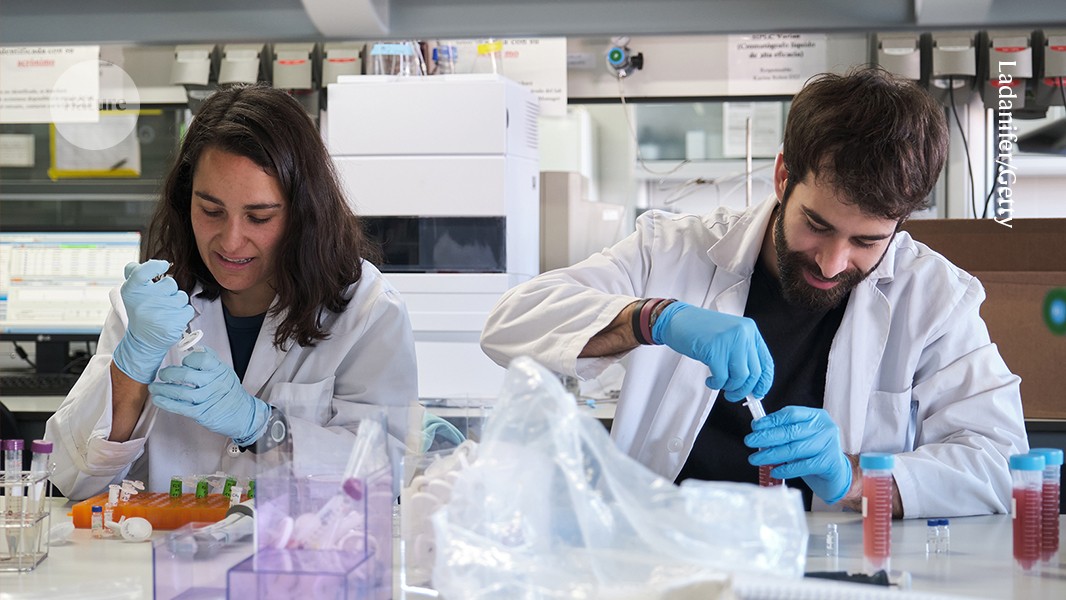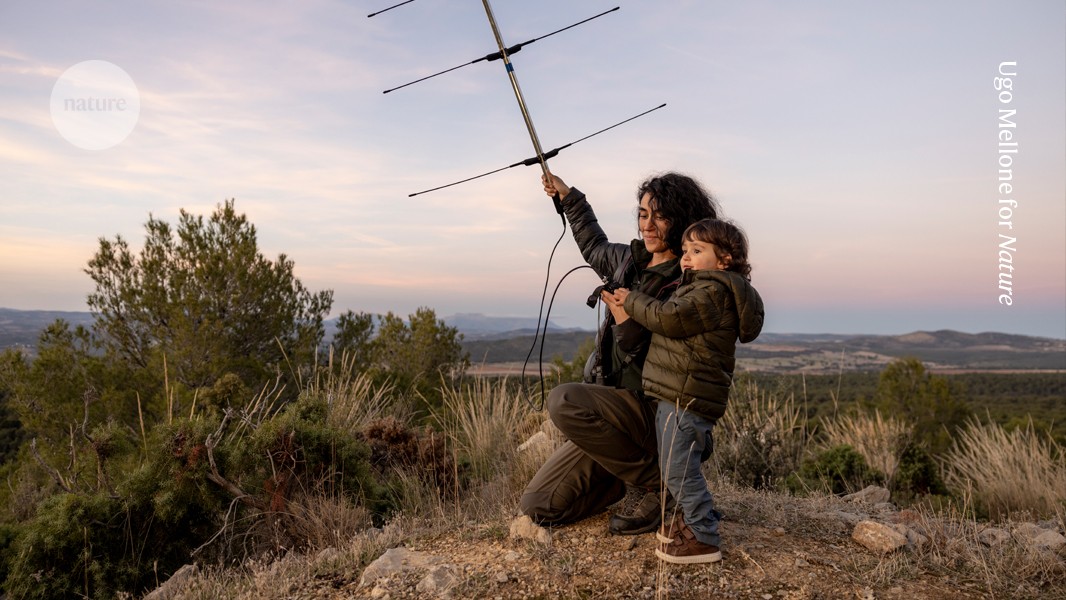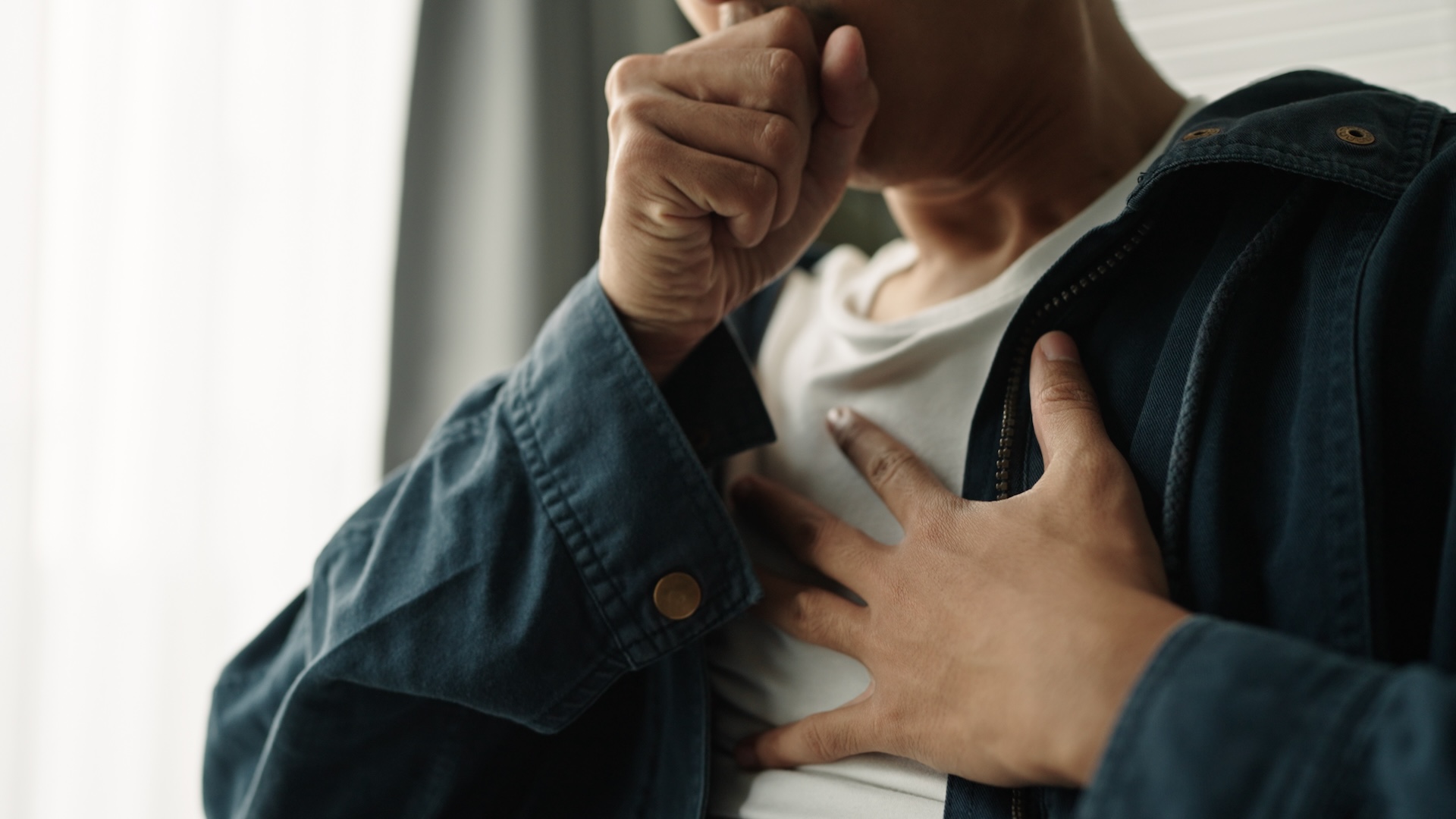www.sciencenews.org
The third episode of The Deep End finds Jon in the operating room as he gets electrodes implanted in his brain. Youll hear how Jon and other volunteers feel in the hours, days and weeks after their surgery, including an itch to go to the library, an urge to walk around the block and a newfound appreciation for scented candles. Along the way, well talk about the brain science that could help explain some of these changes.TRANSCRIPTLaura Sanders: Previously on The Deep End.Helen Mayberg: And all of a sudden, patient goes, Oh, thats interesting. The void is gone.Amanda: When we first walked into the OR, that was the first time I got scared. That was the first and only time I got scared. It just, I saw the machine there, and I saw the big operating room, and I was like, Oh, this is real. This is gonna happen.Jon Nelson: Getting prepared for the surgery was no stress for me, at all. It was like I was going to get my teeth cleaned.Barbara Nelson: What if it, what if he dies on the operating room table? What if it doesnt work? What if, I dont, what if it does work?Sanders: In this episode, were picking up our story early on a Monday morning in August 2022. Jon is about to have electrodes implanted in his brain as a last-ditch effort to ease his severe, unrelenting depression. And hes not worried about it at all. On this episode, were going to hear how the surgery went, and what it felt like in the days afterward, once the electricity started flowing. Im Laura Sanders. Welcome to The Deep End. Jons wife Barbara remembers that morning at the hospital.Barbara: And it was crazy being in like the corral wherever they have, you know, the patients who are getting lined up for surgery because there was like so much buzz around his surgery, and like so many doctors like flying in and out.Sanders: In the middle of all that buzzing, Jons medical team told him that neurologist Helen Mayberg would come in and check on him before his surgery.Jon: And she came in and, you know, gave me the pep talk of all I need you to do is be present. I need you to not care about anybody else or anything and focus on being present. And like, its very hard for me. Im a middle child. I like to take care of everybody. Im, like, the dude who, I wouldnt say Im a control freak in a bad way. Im like, Im like, I just take care of stuff, right? So she was, like, really adamant about that.Sanders: During the surgery, the medical team woke Jon up from anesthesia for some tests. It was a hazy time, but Jon remembers that strange moment pretty well for a guy who was sitting there in the middle of active brain surgery.Jon: But like youre so awake, and like Im so, I was so myself that I, like, Dr. Maybergs right in your face right away, and shes like, Jon, its Dr. Mayberg and Dr. Figee. And, and youre like, Hey, Doc, you know. And I said, Doc, I need to tell you something. And shes, like, so concerned. Shes like, Yes, yes, yes. Im like, Im present. And I was just like busting her chops, you know? Shes sitting there laughing. Shes like, What a character this dude is, right?Sponsor MessageSanders: Jon then went back under anesthesia. Everything with the surgery went smoothly. When he woke up the next morning, he felt like he had a bad hangover, but he had to push through, because now the real work was beginning. Scientists took him to a testing room and began sending electricity through his new brain implants. They were searching for the right settings, the right pattern of electricity that would override his brains own electrical signals. It was a strange situation, very much trial and error at this point.Jon sat with Mayberg and another scientist as they began to turn on and off electrodes. While this was happening, Barbara and other family members and researchers watched on a video feed from another room.Jon: So theres those people in the lab, and then theres an overflow room where everybodys on Zoom, so all the clinical researchers and everybody, my mom, my wife and my dad, and theyre all watching this in the other room.Sanders: Barbara remembers what it felt like to be in that room watching on a screen as her husbands brain got prodded with electricity.Barbara: We got to meet all the brilliant scientists and sit in a conference room while, and watch the whole thing that they do with the questions and the testing. And that was fascinating, and, like, I felt, like, very privileged to get to see. And its like, when you think about people like really devote their whole life and theyre helping so many people. Its so moving.Sanders: The researchers method of identifying which setting might be good involved asking Jon two simple questions: Do you want to walk your dog? And do you want to have friends over to sit around your fire pit? They sound random, but theyre not. They both were designed to gauge his desire to fight the inertia of his depression, to get up and to do something.Jon: When we moved to where I live now, I built this dope fire pit, right, and like we used it all the time. I havent had a fire in two years. And so I just, I cant do anything. And so she was like, Are you interested in having your friends over and having a fire? And so literally after every electrode is turned on, those were the questions I would answer.Sanders: Barbara remembers thinking about a different question.Barbara: And I would joke to my father, like, ask him if he feels like doing dishes. Like, thats the, thats the setting we want.Sanders: The questioning went on a long time, hours. It got tedious. By the end of it, Barbara could see on the video screen that Jon was fading.Barbara: And at one point he was getting very, like, tired and hungry. And so I remember like being like, Can you stop? Can I go get him a soda or something? You know. So I was happy to be able to, like, take care of him in that way.Sanders: The research team settled on a pattern of electricity, the strength, the spots, that seemed right.Barbara: And then we left and we drove home.Sanders: Back at home, the change was obvious.Jon: The next day that I got home, bandaged up in my head, I not only took the dog on a walk, I asked my son and my wife to come with me. I enjoyed the walk. I enjoyed the conversation. I enjoyed coming back home. I sat outside and had coffee. The, literally, the next day, I was walking with a friend. I, I havent, I, its just, its surreal. Like I, I feel like I tell them I feel like Im on like a 60 Minutes episode. I mean, it doesnt make any sense to me.Sanders: Jon and I first talked about six months after his surgery, and he has no doubt, not one, that it cured him.Jon: Overnight I was healed. I have been in remission from depression since the moment they have turned that on. I have not had a single suicidal thought.Sanders: Barbara could barely believe it. In fact, she held on to her skepticism for a while.Barbara: And we have a picture of the two of us, but he has got bandages on his head. And we walked, you know, around the corner and back, but that was a pretty big deal. But of course, I was like, well, you know, its placebo effect. Like, Im not gonna get too excited about that. And he just started to feel better so quickly. And he said, Can you email Dr. Mayberg and tell her what youre seeing? And I didnt do it. And hes like, Why? And I waited like a week, or 10 days, and then I finally did write to her. And he said, Why did you take so long? I was like, Because I wasnt really quite sold on this as being like the reason, right?Sanders: Barbara never did feel what Jon was feeling, that poison running through his veins, but she saw his shift from the outside.Barbara: Hes definitely back. Like, his energy level is back, and we always joke, were like, Do they have like a, like, can we turn it down a little? Like, is there, like, a setting that we can like dial it back? Because hes, hes a lot of personality. Hes very bubbly and vivacious. He kind of like walks in the room and starts talking. Give me a second here, so he, thats back for sure. Where its like, he, hes doing a speaking engagement, and hes gonna get paid 500 dollars. And I was like, Ill pay him 500 dollars to not talk for an hour.So he, thats definitely back. And that is the Jon I remember from 22 years ago, for sure. The Jon in between was a little bit quieter, a little bit more irritable, less present, less interested in, you know, hanging out with friends. And so, its, its nice to see him back.Sanders: Jon puts it plainly.Jon: So clearly, Im immediately healthy after the surgery and they turned it on. I am proof that major depressive disorder is a brain disease. I have an alternator in my car that is not working, and the mechanics fix that alternator, and my car works again. Its literally that simple.Sanders: The beginning of recovery looked a little different for Amanda, the artist and web designer in New York City. She didnt have that same obvious change, at least not right away. Her surgery was a few months after Jons. She remembers leaving the hospital feeling something.Amanda: I definitely didnt walk out feeling better, but I did walk out feeling hopeful. Because I sort of noticed something.Sanders: She struggled to put a name to it.Amanda: I left the hospital on a Friday. By Sunday, I could tell it was working.Sanders: Really?Amanda: I could tell things were getting better. Yeah.Amanda: And then by Wednesday, the fifth day after the, after the surgery, thats when it got completely better. And it stayed that way ever since.Sanders: Amanda thinks in pictures. And so when she tells me about the days and the weeks after her surgery, a lot of her descriptions are of the art that shes made.Amanda: Cause at first, I was felt like I was standing on the edge of a cliff, like, I sort of, Im a very visual person, so I was drawing pictures to sort of help myself think about it. So my first picture was this, like this giant weight at the bottom of the ocean. And I had just broken free from it, and I was on the surface, and I had little floaties on my arms. I was excited that I wasnt drowning anymore. That was the first picture. But the actual relief, I cant even describe the relief. Ive never felt relief so profound in my life. Like, it was like, you just like get used to living in pain, and the pain is all of a sudden gone. Youre like, What is this?Sanders: She started having what she calls weird experiences. These are experiences that are not weird at all to most of us.Amanda: The weirdest one that got me was smells. Like, I never enjoyed a smell before, and now I have like, I have these candles, one sitting here, and they smell so good. Like, candles never smelled good before.Sanders: I heard a similar thing from Emily Hollenbeck, who also lives in New York City and had DBS surgery in 2021, about a year and a half before I spoke with her. She describes her depression in terms of absence.Emily: That sensory anticipation isnt there, so I cant start, you know, my mouth wont water. I wont really think about, so with depression for me, and like, any sort of excitement or anticipatory fun is just shut down.Sanders: But with DBS, a funny thing happened. When a certain pattern of brain stimulation was turned on during her surgery, Emily started to think about bacon.Emily: I was tasting the bacon in my mind. And I could taste the salt and the fat and the crispiness, and I started to feel that sense of hunger.Sanders: Thats something she couldnt really do when she was depressed.Emily: So to have that in contrast and be like, Wow, I really want bacon, was just so immediate and so strong, and thats why it really struck me.Sanders: In the days after the surgery, she rested.Emily: So I remember, you know, getting these instructions to lay low and, you know, watching reality TV, you know, and eating, you know, what my, what my lovely friends are bringing me to eat. But Im also, like, I wanna go to the library. And I just noticed that kind of feeling of, like, almost itchiness and restlessness. Like, I have these impulses to move, to do things, to enjoy things.Sanders: Mayberg wasnt surprised at these desires for everyday activities.Mayberg: So one guy, we hit the switch. He kind of feels different. Hes having trouble describing it, and all of a sudden he goes, You know, Doc, I know its a pretty ridiculous thing cause Im bolted into the contraption in this operating room, but if I was home right now, I would clean my garage. And we all start cracking up. And then we had another patient whose comment was, I think if I was home right now, Id mow my lawn. No one ever said, I want to go to Disneyland. I wanna go dancing. Everything was, Thank you. I have an activity of daily life I want to do. One person said, I need to deal with the garden. I have dishes that are piled up in the sink. Here in this moment, the simple things is what came back into focus.Sanders: That motivation, that itch to do something normal, makes sense based on the part of the brain that was getting this extra electricity. Jon, Amanda, and Emily have constant brain stimulation targeted to a brain area called the subcallosal cingulate, or SCC. The SCC, and the signals it sends to other brain areas, seems to have a role in generating negative emotions, immobility, cognitive sluggishness, and heavy physical feelings. That shows up when Jon describes his feeling of being stuck, especially when it came to his own treatments and things he knew that would be good for him to do, but he just couldnt.Jon: I know that Im supposed to meditate. I know that Im supposed to get exercise. I know that Im supposed to eat well. I know that Im supposed to do these 800 million things that Ive been taught in every therapeutic setting in every environment that I can to get better. I cant do them.Sanders: Stimulating in the SCC can overwhelm those nerve cells that are telling Jon that he just cant do those things. The stimulation tires them out. It makes all of these I cant do it cells hush. And in this quiet, energy and motivation can begin to flow. This part of the SCCs job may explain why Jon went for a walk in the hospital halls and then later at home with his family, why Amanda felt a spark of energy and why Emily had an itch to get up and go to the library. The SCC used to be known as Area 25, and its the same spot that was targeted in the Broaden clinical trial. Thats the one that we talked about in the last episode, the one that was stopped because of poor results. So whats different now? Since Broaden, brain imaging techniques have gotten a lot better. So scientists can actually see this part of the brain and see how it connects to other parts. Its almost like a giant train station. It holds a confluence of tracts, inbound and outbound signaling paths. These are all called white matter tracts and they speed information across the brain.So in the Broaden trial, researchers could direct electricity to the SCC, to the right train station, essentially. But they were not able to hit the specific tracks every time. It turns out that the people who got better in that trial, they lucked out. Their electrodes happened to be hitting the key white matter tracts. If this research sounds like a work in progress, thats because it definitely is.In fact, the SCC isnt the only spot in the brain people are studying. Ill tell you about another promising target. This ones called the ventral capsule/ventral striatum, or VC/VS, and its involved in feelings of reward. To use Jons car metaphor, if the SCC is the brake, then the VC/VS is more like the gas pedal.In my reporting, I talked with a man who was in a different clinical trial, one that involved him getting stimulation to both spots, the SCC and the VC/VS. Scientists wanted to know where in the brain might be best and how other brain areas respond to this stimulation.It was essentially a massive eavesdropping situation. The man was the first to undergo this surgery. As such, he became patient 001 on his medical forms. And thats a name he actually grew fond of, he told me. For this story, he wants to stay anonymous, so Im gonna call him patient 001. The voice you hear isnt his, but the words are.Patient 001: Im going through this very non-emotional, but it was horrific. At this stage, Im on the other side of it, so I can explain it rationally. The only way I can describe it, and most of the time, this is to my family because I obviously dont talk to most people about this. My first depressive episode, Id say, Look, mom, this is something I wouldnt wish on my worst enemy. No human being ever, even the worst person in the world, should have to go through this. Its torment. Its torment. I dont have the words to describe it.Sanders: He traveled to Houston from New York City where he was living at the time, and was scheduled for surgery on March 9, 2020. His surgery squeaked through just days before all non-emergency surgeries were canceled because of the growing COVID pandemic. Jon, Amanda, and Emily each had two wires implanted in their brain. During surgery at Baylor Saint Lukes Medical Center in Houston, patient 001 was implanted with four. There were two in the SCC and two in the VC/VS. He got 10 extra electrodes too. These were temporary, put in to monitor other parts of his brain that were connected to the SCC and VC/VS regions. If you look at a picture of his brain while he was in the hospital, its full of hardware. It was a lot.Patient 001: Im not gonna say the 10 days stay in the hospital was a walk in the park, because it wasnt. But when you have nothing to lose and youre in hell, youll do anything.Sanders: Like Jon, patient 001 went through a similar testing phase with his electrodes. At one point, he felt something big.Patient 001: I said, I dont know what you did, but it feels like Im online again. Im online. If you think of your brain as a computer, it felt like I had a virus, and then my hard drive crashed, and all of a sudden, boom. They control all the leads and they reboot you, and youre OK again. I remember the doctor and the people in the OR literally laughing, like, Thats a new one. We laugh about it, but it came out of my heart. Its how I felt.Sanders: The stories youve just heard from Jon, Amanda, Emily, and the Houston volunteer all sound remarkable, almost one of a kind, and in all sorts of ways they are. These four people were pulled out of deep suffering and restored to themselves. But the story doesnt end here. Theres not a happily-ever-after stopping point. Things start to move from here in a more complicated way, and that makes sense because when it comes to people, and when it comes to the brain, nothing is simple.After their surgeries, Jon and the others found relief. But now they had to learn to live with a full emotional rangethe good, and also, the bad. And it turns out thats a lot easier said than done.On the next episode, youll hear about a crisis that Jon faces and what that crisis tells us about human emotions.Jon: Immediately I sent an email to the lead psychiatrist of this trial and I said, Did you guys turn it off? Like, is it working? Like, give me a heads up. You just start completely freaking out.Sanders: If you or someone you know is facing a suicidal crisis or emotional distress, call or text the 988 Suicide and Crisis Lifeline at 988.This is The Deep End. Im Laura Sanders. If you liked this podcast, tell your friends or leave us a review. It helps the show a lot. Send us your questions and comments at podcasts@sciencenews.org.The Deep End is a production of Science News. Its based on original reporting by me, Laura Sanders. This episode was produced by Helen Thompson and mixed by Ella Rowan. Our project manager is Ashley Yeager. Nancy Shute is our editor in chief. Our music is by Blue Dot Sessions. The podcast is made possible in part by the Alfred P. Sloan Foundation, the John S. James L. Knight Foundation, and the Burroughs Welcome Fund, with support from PRX.Episode 3 creditsHost, reporter and writer: Laura SandersProducer: Helen ThompsonMixer: Ella RowenSound design: Helen Thompson and Ella RowenProject manager: Ashley YeagerShow art: Neil WebbMusic: Blue Dot Sessions,Morning by Edvard Grieg/Czech National Symphony Orchestra/MusopenSound effects: Epidemic SoundAdditional audio: Luke Groskin, Nikk OgasaThis podcast was produced with support from PRX, the Alfred P. Sloan Foundation, the John S. and James L. Knight Foundation, and the Burroughs Wellcome Fund.If you have questions, comments, or feedback about this episode, you can email us at podcasts@sciencenews.org.
